Founded in 1902
I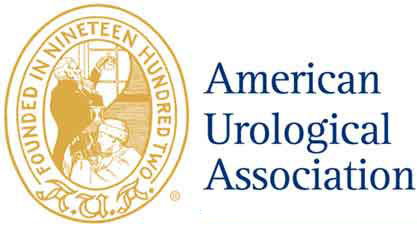 n 1900, a group of New York surgeons with special interest in the genitourinary system organized themselves as the New York Genito-Urinary Society. On 22 February 1902, eight members of that Society met for dinner in the home of Dr Ramon Guiteras and voted to disband the society and to officially form the American Urological Association. At that time, the AUA consisted mostly of New Yorkers but, within a year, its membership included doctors from around the country, including the West Coast.
n 1900, a group of New York surgeons with special interest in the genitourinary system organized themselves as the New York Genito-Urinary Society. On 22 February 1902, eight members of that Society met for dinner in the home of Dr Ramon Guiteras and voted to disband the society and to officially form the American Urological Association. At that time, the AUA consisted mostly of New Yorkers but, within a year, its membership included doctors from around the country, including the West Coast.
Visit the American Urological Association website
The Association was opened to all surgeons, including obstetrician-gynecologist and genitourinary specialists. In the early years, its geography encompassed South America and the West Indies. At annual meetings, papers could be read in any modern language, but they were to be published in English and Spanish.
With respect to the specialty of urology, the anatomic limits of the genitourinary system were agreed upon for both sexes - emphasis was to be on the urinary system. Gonorrheal urethritis remained within the purview of the specialty but dermatology and syphilology were excluded.
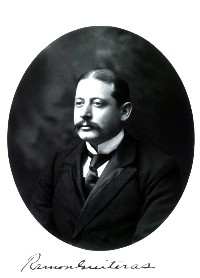 Officers elected at the first meeting of the American Urological Association were Drs Ramon Guiteras - President (pictured right); William Otis - Vice-President; Ferdinand C Valentine - Secretary; John Van der Poel - Treasurer and AB Mabie - Assistant Secretary.
Officers elected at the first meeting of the American Urological Association were Drs Ramon Guiteras - President (pictured right); William Otis - Vice-President; Ferdinand C Valentine - Secretary; John Van der Poel - Treasurer and AB Mabie - Assistant Secretary.
Foundation & branch societies
From its founding in 1902, the AUA was made up of branch societies and sections. The five major Sections, according to the Bylaws, during the 1920's, were the North Atlantic, the South Atlantic, the North Central, the South Central and the Western. During the early years, the AUA geographically included the Western Hemisphere and included all of South America and Central America. Until 1923, new members were required to maintain membership in a branch society in order to be members of the AUA. That clause was eliminated from the AUA Bylaws in 1923. However, in 1932, it again became a requirement. In fact, in 1934, membership in the branch society had to be maintained to continue being a member in good standing of the parent society. AUA International Membership was established in 1935.
In 1937, numerous problems surfaced with the branch societies, including incompatibility of membership requirements of the branch societies and the parent association. Also, there was some duplication of territories, e.g. the New York branch and the New England branch. There were requests for formation of new branches and there was general dissatisfaction over the representation of Branch societies on the parent society's executive committee. Several recommendations were put forward to correct problems, although the problem of territorial duplication was not addressed. Active membership in a branch society was to be required. For a branch to be chartered, 35 members were required. A Committee was formed to address representation on the executive committee.
Formal establishment of "sections"
In 1938, the specific problem that geographic sections were not equally represented on the executive committee was studied. The proposed solution was that new boundary lines be arranged so that approximately an equal number of members or fellows resided in each of eight sections. It was felt that this would make it possible for the sections to be equally represented on the Executive Committee and the committee on Publications, as well as on the executive branches of the organization. Thus, eight sections, each of approximately equal membership, were established. Branches were allowed to maintain their identities. At that time, a minimum of 100 members was required to be a chartered Section. To form a branch, the minimum number was reduced to 25 members.
Part of the 1938 proposal included the following bylaws statements:
If the geographic elements of a section have not been definitely defined at the time of its formation, the Executive Committee shall have the authority to decide any disputes which may arise. Section membership is required for parent society membership. Branches have no members on the Executive Committee.
The 1938 proposed revisions, with the eight-section breakdown, were formally accepted in 1939 and went into effect in 1940. In 1942, Mexico and New Mexico became members of the South Central Section, over the objections of the Western Section. In 1947, Quebec, New Brunswick, Nova Scotia, Prince Edward Island and Newfoundland became members of the Central Section with agreement from the New England Section, and the name of the Central Section was changed to the Northeastern Section as we know it today.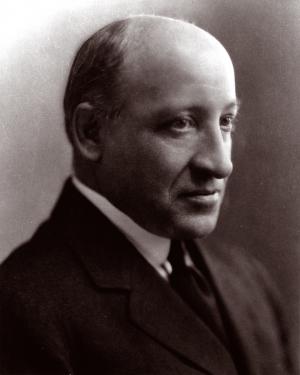
The AUA did not always have its central office in Baltimore, nor was that location given much consideration when the Association first looked for its home office. The first official AUA records were kept by the first AUA secretary, Dr Ferdinand C. Valentine, New York City, in his professional office. When Dr Hugh Cabot (pictured right) became secretary, the records were transferred to his office in Boston. AUA files were transferred to each succeeding AUA secretary's office up to and including Dr Charles H deT Shivers (Atlantic City, New Jersey).
Until the mid-1940's, the AUA secretary's office was considered the main AUA office. In November 1942, during the first year as AUA secretary, Dr Thomas Moore, Memphis, hired Ms Dorothy Nyquist as his secretarial assistant and she very efficiently looked after the administrative responsibilities of the Association. On many occasions, Dr Moore reminded the membership that:
It would be utterly impossible to conduct the affairs of the Secretary's office without an efficient assistant. The best interests of the Association have been and are of great concern to her and she is largely due the credit for the prompt replies to matters brought to the Secretary's attention.
By 1948, urology was well recognized as a special area of medicine and surgery, and the numbers of urologists were increasing. The AUA was growing with 1,290 members; however, it still served as a scientific and social organization.
New appointments created
In June 1952, the position of AUA Executive Secretary was created and Mr William P Didusch (pictured below right), the Association's Director of Conventions and Art Editor for the Journal of Urology, was officially hired for that position. In August 1952, following the third year of Dr Shivers' term as AUA Secretary, the AUA officially settled in rented space at 1120 North Charles Street, Baltimore, from the Hugh Young estate, and transferred the official records from Dr Shivers' office in Atlantic City to the new Baltimore office. At first, just one apartment was leased in the building. On the first floor was the French Shop, a ladies' apparel store. Mr Didusch's studio was on the second floor. Ms Bertha Trott, who lived in a fourth floor apartment, was Dr Young's secretary and transferred the editorial offices of the Journal of Urology from Johns Hopkins to the North Charles address.
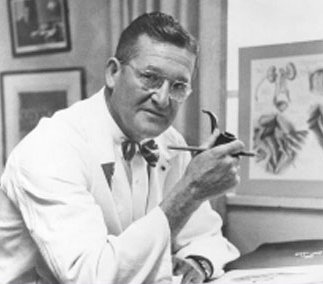 The entire AUA lay staff in 1952 consisted of Trott, Didusch and Virginia L Bruce. Bruce (whom "Mr D" affectionately nicknamed "Suzie") was hired as administrative secretary, immediately after the central office was established in 1952. Expansion of the staff did not begin until 10 years later. In 1963, Peggy L Dienst was employed as assistant for Journal of Urology operations.
The entire AUA lay staff in 1952 consisted of Trott, Didusch and Virginia L Bruce. Bruce (whom "Mr D" affectionately nicknamed "Suzie") was hired as administrative secretary, immediately after the central office was established in 1952. Expansion of the staff did not begin until 10 years later. In 1963, Peggy L Dienst was employed as assistant for Journal of Urology operations.
The Treasurer in 1952, Dr. George C Prather, Boston, continued to maintain the financial records in his professional office. The first Treasurer to transfer office records to Baltimore was Dr. William Kittredge who became treasurer in May 1966.
Between 1977 and 1987, several references emphasized that the AUA had no formal relationship with branch and state societies. These groups were encouraged to associate with the geographic sections.
Another important factor about the AUA in the early years was that it was not incorporated, nor was it considered by the government as a non-profit organisation. The AUA existed as a scientific and social organization. Several times, the executive committee discussed incorporation, but decided against it until the 1950s when the government began to investigate medical societies, especially those with journals. In 1958, the AUA was formally incorporated as a 501(c)(3) not-for-profit entity in the State of Missouri, on recommendation of legal counsel to the AUA finance Committee, chaired by Dr. Grayson Carroll, then Treasurer. Each of the eight sections was also incorporated as separate corporations in the State of Missouri, in the early 1960s, through the offices of Urban Bergbauer Esq. While initially incorporated in the state of Missouri, the AUA reincorporated in Maryland on 12 July 1984.
In July 1965, the executive committee noted that, because of the growth of both membership and general work of the AUA, the Executive Committee found it necessary for the good of the Association to increase the personnel of the home office in Baltimore. Richard J Hannigan now assisted Didusch. Hannigan was actually employed by Didusch on 15 March 1965 to serve as assistant in general AUA administration. At that point, the Executive Committee authorized the leasing of additional space at the Baltimore home office.
On 1 March 1968, Deborah F Polly was employed to assist with The Journal of Urology editorial operations. Thus, the total number of full-time AUA employees as of March 1968 had increased to six.
Didusch's studio was the scene of many official and unofficial meetings. The Program Committee frequently met in Didusch's studio to finalise scientific sessions for the annual meetings. The property was actually purchased 20 years later with the final payment made in 1975.
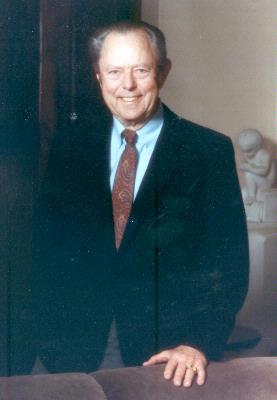 Office of Education
Office of Education
The AUA Office of Education began operation from Aspen, Colorado under the direction of Dr Russell Scott Jr (pictured right) as of 13 July 1976. As Director of the Office of Education, Dr Scott was responsible for developing and conducting all AUA Educational projects in collaboration with the AUA Education Council, then chaired by Dr C Eugene Carlton. The Office of Education was founded to execute the administrative workload of the Education Council. Dr Scott held the post as OE Director until the summer of 1980 at which time Dr Carlton assumed the position of Director of Education for the AUA. Dr Carlton hired Mr William A Brubaker, Assistant Director of the Office of Education. The Education Office relocated to Houston, Texas as of 15 June 1980 where Dr Carlton and Mr Brubaker organized a new staff to function.
Prior to 1987, the AUA was not officially departmentalised. The operations from the Baltimore Headquarters Office were considered under the general umbrella of "Administration." All Association activities, other than the Education Office courses, were administered through the Baltimore office. Beginning in 1987, two lengthy studies were conducted of the AUA - one by Ingoldsby to search for a CEO and the other by Strategies Inc of the AUA's operations. The Ingoldsby study resulted in the employment of G James Gallagher as Executive Director on 1 February 1988. The Strategies' study resulted in departmentalising AUA operations in Baltimore.
In 2002, not only did the American Urological Association celebrate its 100th anniversary, but it also celebrated its 50th anniversary of having settled in Baltimore, Maryland as its home. In 1952, AUA leased one small apartment. In 1999, AUA owns a large property, from 1110-1128 North Charles Street. In 1952, there were just three employees; in 1999, there are more than 50. In 1952, the AUA membership was just 1,365. In 1999, it is more than 13,000. In 1952, the Association's Executive Committee was concerned with graduate education, research, and the effect of government on urologists' practice. In 1999 ... well, some things just do not change!
In 2003, the American Urological Association consolidated its Office of Education in Houston with the North Charles Street office in a new headquarters building in Linthicum, MD.
BAUS is very grateful to Tupper Stevens, from the William P Didusch Centre for Urologic History, for providing this history of the AUA.
William P Didusch Centre for Urologic History
← Back to American Urological Association